.

Elevated Car Falls to Street. A street car hurled from an elevated track onto a pile of
snow at Eighth Ave. and 138th Street, New York City: photo by Bain News Service, 16 February 1914 (George Grantham Bain Collection, Library of Congress)
The last leaf that is going to fall has fallen.
The robins are là-bas, the squirrels, in tree-caves,
Huddle together in the knowledge of squirrels.
The robins are là-bas, the squirrels, in tree-caves,
Huddle together in the knowledge of squirrels.
The wind has blown the silence of summer away.
It buzzes beyond the horizon or in the ground:
In mud under ponds, where the sky used to be reflected.
It buzzes beyond the horizon or in the ground:
In mud under ponds, where the sky used to be reflected.
The barrenness that appears is an exposing.
It is not part of what is absent, a halt
For farewells, a sad hanging on for remembrances.
It is not part of what is absent, a halt
For farewells, a sad hanging on for remembrances.
It is a coming on and a coming forth.
The pines that were fans and fragrances emerge,
Staked solidly in a gusty grappling with rocks.
The pines that were fans and fragrances emerge,
Staked solidly in a gusty grappling with rocks.
The glass of the air becomes an element --
It was something imagined that has been washed away.
A clearness has returned. It stands restored.
It was something imagined that has been washed away.
A clearness has returned. It stands restored.
It is not an empty clearness, a bottomless sight.
It is a visibility of thought,
In which hundreds of eyes, in one mind, see at once.
It is a visibility of thought,
In which hundreds of eyes, in one mind, see at once.
Wallace Stevens: from An Ordinary Evening in New Haven (part XXX), 1949

Snow storm damage, Cleveland, Ohio: photo by Bain News Service, c. 1913 (George Grantham Bain Collection, Library of Congress)

Union Square, New York City, after snow storm: photo by Bain News Service, c. 1910 (George Grantham Bain Collection, Library of Congress)
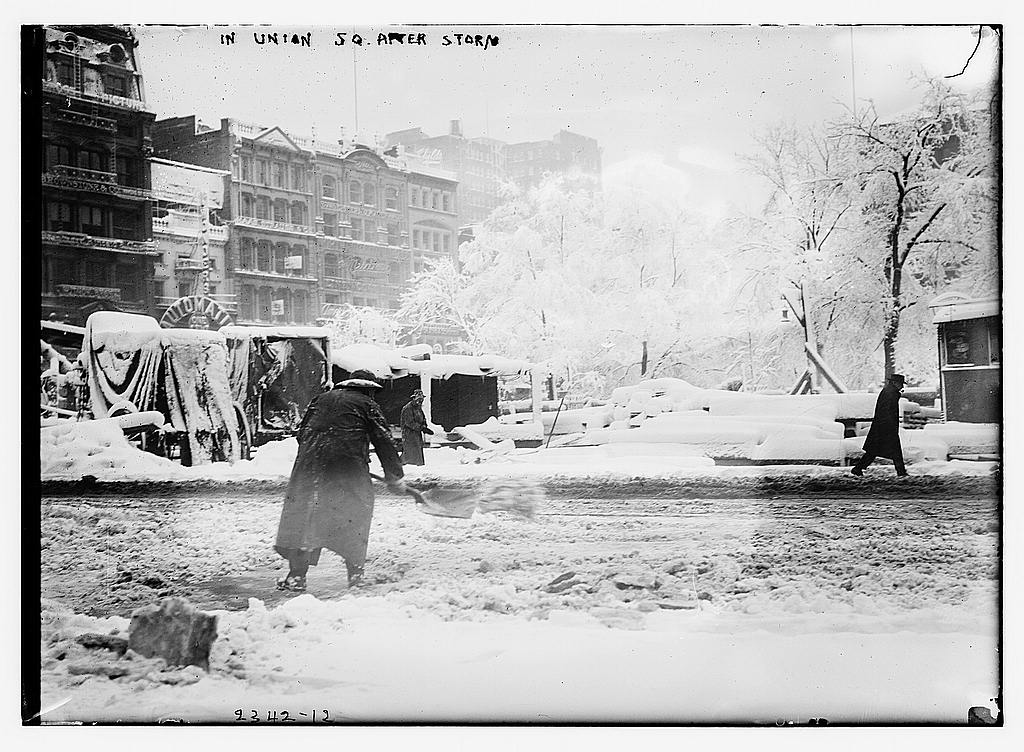
In Union Square, New York City, after snow storm: photo by Bain News Service, c. 1910 (George Grantham Bain Collection, Library of Congress)

Snow plow, Union Square, New York City: photo by Bain News Service, c. 1910 (George Grantham Bain Collection, Library of Congress)
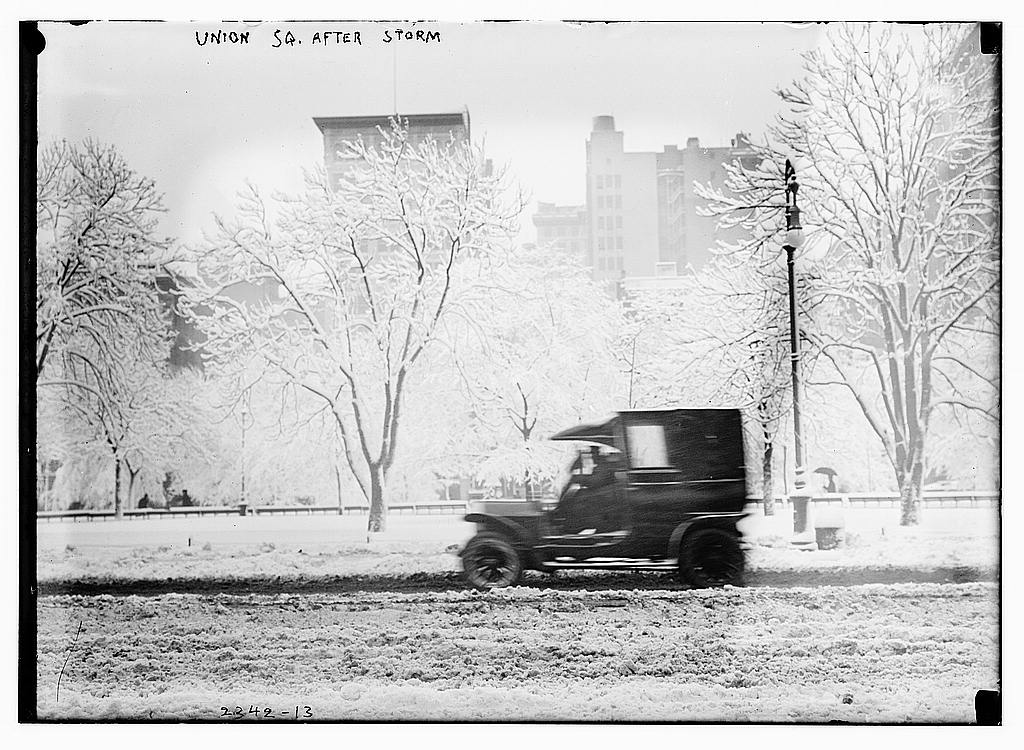
Union Square, New York City, after snow storm: photo by Bain News Service, c. 1910 (George Grantham Bain Collection, Library of Congress)

Union Square, New York City, after snow storm: photo by Bain News Service, c. 1910 (George Grantham Bain Collection, Library of Congress)
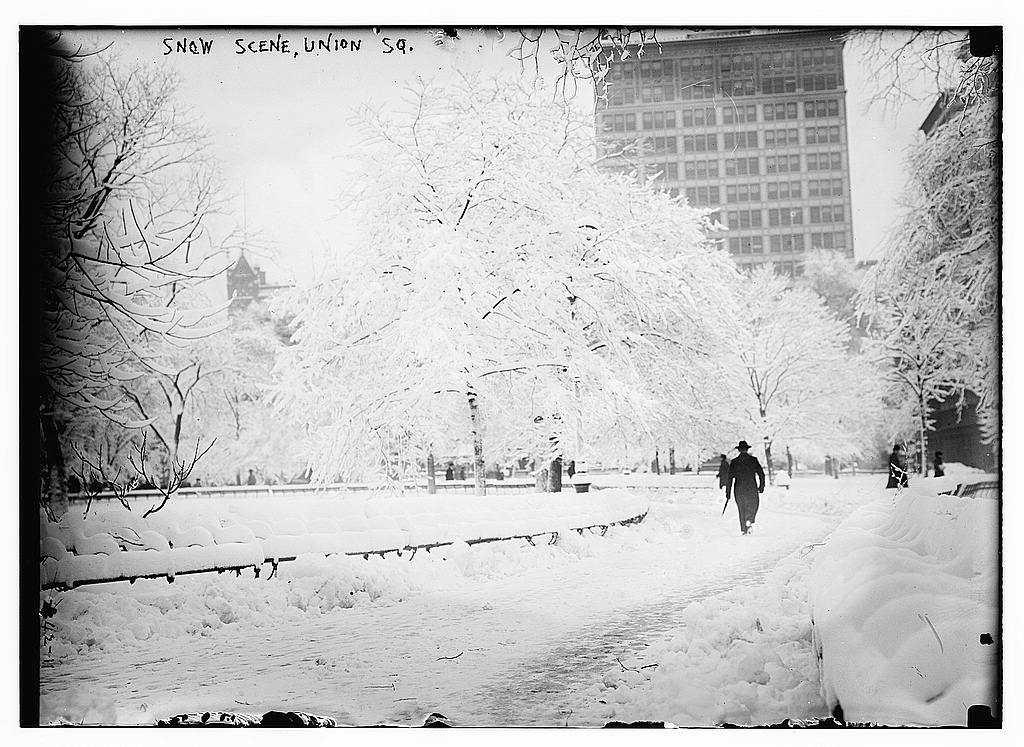
Snow scene, Union Square, New York City: photo by Bain News Service, c. 1910 (George Grantham Bain Collection, Library of Congress)
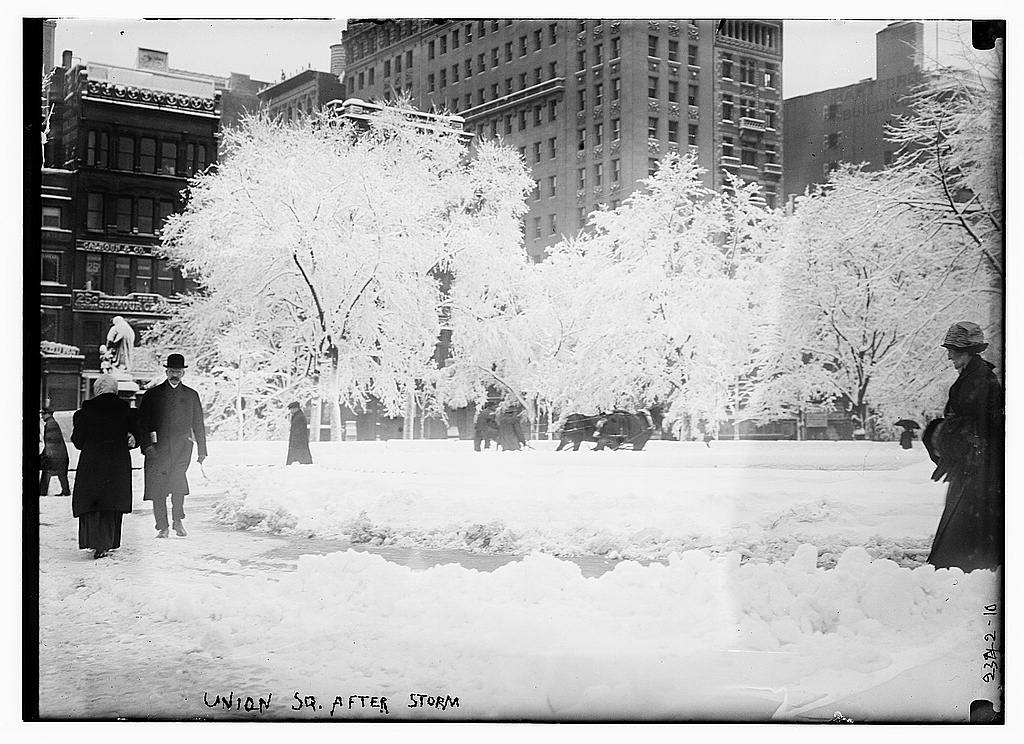
Union Square, New York City, after snow storm: photo by Bain News Service, c. 1910 (George Grantham Bain Collection, Library of Congress)
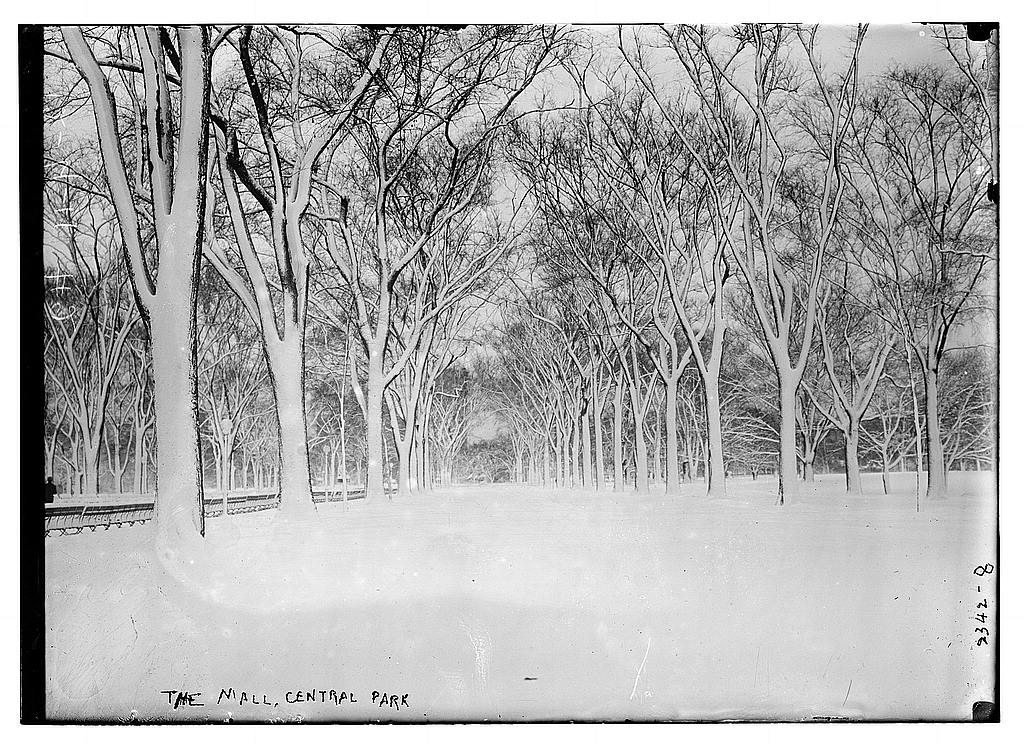
The Mall, Central Park, New York City, after snow storm: photo by Bain News Service, c. 1910 (George Grantham Bain Collection, Library of Congress)
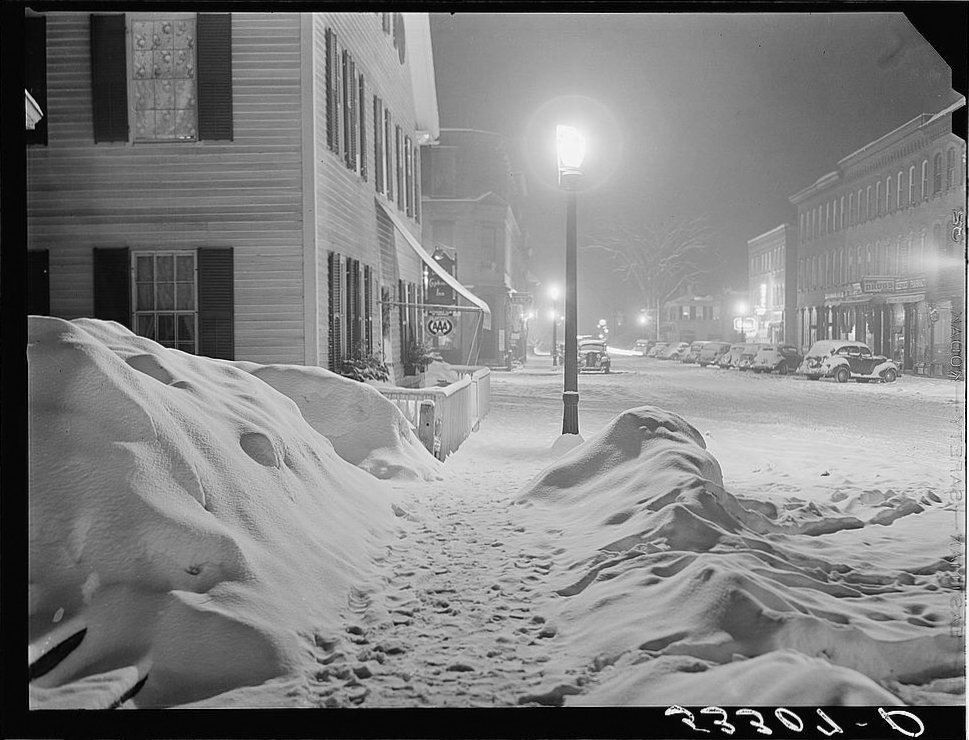
Center of town, Woodstock, Vermont, snowy night: photo by Marion Post Wolcott, March 1940 (Farm Security Administration/Office of War Information Collection, Library of Congress)

Main street, Conway, New Hampshire, after snow storm: photo by Marion Post Wolcott, March 1940 (Farm Security Administration/Office of War Information Collection, Library of Congress)

Scene at snow carnival, Lancaster, New Hampshire: photo by Arthur Rothstein, February 1936 (Farm Security Administration/Office of War Information Collection, Library of Congress)

North Conway, New Hampshire, after snow storm: photo by Marion Post Wolcott, March 1940 (Farm Security Administration/Office of War Information Collection, Library of Congress)

Highway after snow storm near Jackson, New Hampshire: photo by Marion Post Wolcott, March 1940 (Farm Security Administration/Office of War Information Collection, Library of Congress)

Highway and school bus after snow storm, near North Conway, New Hampshire: photo by Marion Post Wolcott, March 1940 (Farm Security Administration/Office of War Information Collection, Library of Congress)

Center of Woodstock, Vermont, on Saturday afternoon after snow storm: photo by Marion Post Wolcott, March 1940 (Farm Security Administration/Office of War Information Collection, Library of Congress)

Barn and truck snowed under after storm, Woodstock, Vermont: photo by Marion Post Wolcott, March 1940 (Farm Security Administration/Office of War Information Collection, Library of Congress)

Snow-covered cars and broken limbs felled by a snow storm, Washington, D.C.: photo by John Ferrell, March 1942 (Farm Security Administration/Office of War Information Collection, Library of Congress)

Snow storm, Washington, D.C.: photo by Russel Lee, January 1938 (Farm Security Administration/Office of War Information Collection, Library of Congress)

Truck crossing the Blue Ridge Mountains of Tennessee in a snow storm: photo by John Vachon, March 1943 (Farm Security Administration/Office of War Information Collection, Library of Congress)

Jim Fletcher driving through eastern Tennessee mountains during a snow storm: photo by John Vachon, March 1943 (Farm Security Administration/Office of War Information Collection, Library of Congress)

Shoveling snow away from the movie entrance, Chilicothe, Ohio:
photo by Arthur Rothstein, February 1940 (Farm Security
Administration/Office of War Information Collection, Library of
Congress)

Snow in downtown Providence, Rhode Island: photo by Jack Delano, December 1940 (Farm Security Administration/Office of War Information Collection, Library of Congress)

Snow in downtown Providence, Rhode Island: photo by Jack Delano, December 1940 (Farm Security Administration/Office of War Information Collection, Library of Congress)

Snow in downtown Providence, Rhode Island: photo by Jack Delano, December 1940 (Farm Security Administration/Office of War Information Collection, Library of Congress)

Snow in downtown Providence, Rhode Island: photo by Jack Delano, December 1940 (Farm Security Administration/Office of War Information Collection, Library of Congress)

Snow and slush in downtown Providence, Rhode Island: photo by Jack Delano, December 1940 (Farm Security Administration/Office of War Information Collection, Library of Congress)

Snow and slush in downtown Providence, Rhode Island: photo by Jack Delano, December 1940 (Farm Security Administration/Office of War Information Collection, Library of Congress)



12 comments:
What do you say after that?
I have a few nuts gathered here and a pile of wood for the stove ... will batten down the hatches then dig myself out afterwards . . . The first flakes of this storm are descending
that first D.C. photo ? the white stone house ? It is still here. It is the last house down on 13 th Street and that circle... I think Logan Circle ... or is Logan Circle the next one over (on 14 th)
anyway that house was an House of Ill Repute and
when I was in high school (1954 - 1959) it still was.
In 1959 I had a car and drove my friend, Marty R., down to that house. I waited outside while he went in
with the $10 that his dad had given him for his birthday (16 th)
so's he could go down to this place and get laid for the first time.
In 1959, that was called "safe sex"
Yes, the Snowman is coming…Thanks for the photos!
No one writes about the moment between when the Zen arrow is released and it hits its mark. Stevens is always in flight, neither leaving or arriving.. He is like a soul that has just left the body and confronted with space without sensibility. He is always the panoramic eye, transcendent of form but all seeing like the eye that sees his blackbird, the jar that is its own doppelganger. Stevens was the eyes of Argus on his peacocks, a soul of multiplicities whose core is always the I as eye, always he is the lens that shifts perspectives,; he writes from that second stage of supra consciousness when one perceives oneself as the many, as form whose very being is a shared eye of the universe. I have often pondered the sensibility of Stevens and find his poems to be as evanescent as an aurora borealis, a state of reflection that is real, but never hot or burning as a star or having the warmth of the sun. He is always the fragment in orbit of his own elusive self/ Stevens is the Proteus of poetry, his beauty always in the shared eye of the beholder.
All photos striking but the 3nd stops us in its tracks—
Those New York Winters are fierce.
It's the picture of the Mall that strikes me, having the feel of a rayogram.
The robins are là-bas, the squirrels, in tree-caves,
Huddle together in the knowledge of squirrels.
Thinking about the ferocity of those beautiful little birds, the bitter struggle for resources, là-bas is about right. The squirrels have the proper smarts.
The 2th shocks me like a live third rail.
Argus, raise thy many one-eyed shovels!
As Mayor Bloomberg has requested, we are curling up in our igloos with a good rayogram this morning.
(As for what became of Marty, don't ask. Supreme Court Justice?)
Artemesia,
Your comment is valued here, I do hope you won't mind leaving it up.
You've turned my thoughts back once more to Zeno's arrow.
Every day there are moments that do not seem to lead directly into the next moment... yet the dialogue unfolds.
I suppose what made me think of the Stevens bit was those hundred eyes -- prompted by the men looking down from the remaining frame of the snow-crushed structure.
(Remarkably fine Stevens there.)
T.C. You opened some further food for thought.
There are poets who seem to have caught Zeno’s arrow in their teeth thus occupying the same space as the arrow in instants of its flight. One might call this the invasion of the observer which is what the poet is…when he or she is writing a non linear poem, a poem that is, which is one that emotionally and intellectually becomes greater than its meter, its exercise on the page. There are great linear poems, D.H. Lawrence’s ‘Snake’ poem comes to mind as both the time, place and movement of the creature without any metaphor beyond the events in the poem. It is a pure physical poem. A body in motion as it were. Then there are poems that encapsulate time itself and create the illusion of moments in an eternity such as: Keats’ ‘Ode on a Grecian Urn’ and Auden’s “Shield of Achilles.’ The usual ekphrastic poem is a laundry list of what is to be seen in a painting, not an entering into the eye of a time and spectrum of place. Keats and Auden entered into the very fabric of their subject…with Auden entering into a shield that only exists in his and the imagination of historic myth. To go on, there are Eliot’s Quartets that are an homage and dissertation of man in time…his vectors where the culture of his day and High Church collide/converge with both prejudice and a kind of gray compassion. Poems where time itself seems to stand still and becomes part of the statement of the poem are what I would call (to coin a phrase) Zenotic poems! Poems of the everlasting arrow! A moment as moments forever preserved in amber. There are poets born with a natural overview towards experience that takes them beyond cliché and poetic filler. What they know becomes integral to a poem without being a mere display of erudition. We see this in the works of James Joyce who breathed myth into every character in the most prosaic and enduring manner…and so forth…..
Beautiful images. Snow is so pretty in photographs, but I prefer the snows of yesteryear to those that fall on me in the present. Jesse Winchester sang it best in "Snow"--https://www.youtube.com/watch?v=5EEnfFe9qn0.
Terry,
Ooh, son les neiges d'antan.
That's a lovely taste of real clean unpolluted snow on the memory buds, Jesse. When you think what it must have taken to drive a boy from Memphis north into the Canadian snows -- well, a miserable war it was -- the resolution involved in the decision seems all the more impressive.
This is the song that always brings the singer back to me:
Yankee Lady (live on the BBC, 1976)
Down the memory chute mixed with the gentle stream of Jesse's voice tumble the lyric tones of a singer/writer I often think of in the same thought, Tim Hardin, who probably would have been better off taking Jesse's Canada escape route (as difficult as that was) than going to Nam as he did -- considering the habits he (and a lot of other scared kids) came back with.
That '68-'69 period of memory often returns for me coloured in TH's ballads, darkly bright or brightly dark as they are, and remembering what that blue surprise really was ("....the pinning of my eyes").
Tim Hardin: Red Balloon
Post a Comment